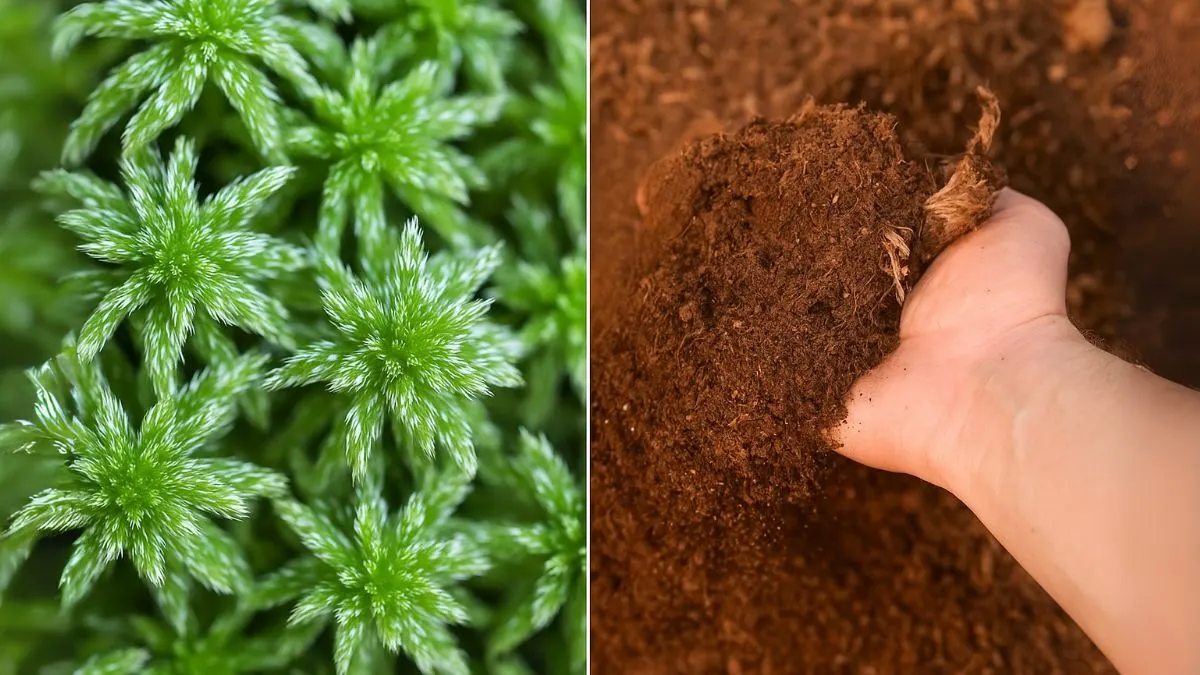If you’ve been gardening for a while, chances are you’ve heard about peat moss. It’s one of the most popular materials in gardening, landscaping, and even hydroponics. But what exactly is it, and why do gardeners love it so much?
At its core, peat moss is a dark-brown fibrous natural material used as a soil amendment for growing plants. It’s not regular compost—it’s actually a decomposed organic matter, primarily from sphagnum moss, that forms over thousands of years in waterlogged, anaerobic peat bogs. Because of this unique origin, it’s lightweight, nutrient-friendly, and excellent at holding water without becoming soggy.
I first started using it in seed trays a few years ago, and I noticed immediately how well the seeds germinated. That was my introduction to this gardener’s favorite.
What Exactly is Peat Moss?

- It comes from peat bogs where plant matter slowly decomposes over centuries.
- It’s harvested, dried, and then used in gardening products.
- Unlike compost, it doesn’t break down quickly, so it improves soil structure for a long time.
Gardeners across North America use it because it creates the perfect environment for roots—moist, airy, and healthy.
Where to Use Peat Moss
-
Soil Amendment
One of the most common uses is as a soil amendment. Mixing it with your garden soil improves aeration, water retention, and texture. If you’re dealing with heavy, clay-based soils, adding it can lighten the soil, making it easier for roots to grow.
-
Soilless Mixes
When you buy commercial potting mixes, chances are they already contain peat moss. This is because peat moss is widely used as a potting soil mix or a hydroponic growing medium. Its lightweight, fluffy texture makes it an essential ingredient in soilless growing.
-
Seed Starting
If you’re sowing seeds indoors, peat moss is a game changer. It’s sterile, meaning there’s no risk of fungus or weed seeds interfering with germination. That’s why many gardeners use it as part of their seed starting medium.
Also Read: How to Grow Rain Lily That Appears Like Magic After Rain
-
Mushroom Casting
Did you know it’s also used in mushroom farming? As part of mushroom casting, peat moss helps maintain the right balance of moisture for mushrooms to thrive.
-
Hydroponics
Another exciting use is in hydroponics. Since it retains water while allowing air pockets, it becomes an excellent base medium for growing plants without soil.
Peat Moss and Orchids
One of the most surprising facts? Peat moss is an ideal growing medium for orchids. These delicate plants need consistent moisture but can’t tolerate soggy roots. Peat provides just the right balance, making it a preferred medium for orchid enthusiasts in Canada, the USA, and beyond.
Benefits of Using Peat Moss
- Improves soil structure and texture.
- Retains moisture without becoming waterlogged.
- Encourages strong root growth.
- Lightweight and easy to handle.
- Free of weed seeds and pathogens.
I noticed when I added it to my tomato beds last summer, the plants grew sturdier and required less frequent watering compared to the soil-only section.
Also Read: Why Stromanthe Is the Queen of Variegated Plants
Table: Peat Moss Uses and Benefits
Application |
Why Use Peat Moss? |
Key Benefit |
Soil Amendment |
Loosens clay soils, improves sandy soils |
Better aeration & drainage |
Soilless Mix |
Essential in potting mixes |
Lightweight and root-friendly |
Seed Starting |
Sterile and fine texture |
Higher germination rates |
Mushroom Casting |
Maintains moisture balance |
Ideal growing surface |
Hydroponics |
Water retention with air flow |
Healthy root systems |
Orchid Medium |
Consistent moisture for roots |
Prevents rot while hydrating |
Limitations to Keep in Mind
While it’s incredibly useful, peat moss is not without controversy. Harvesting it takes centuries of natural buildup, which raises environmental concerns. It’s always a good idea to check for sustainably sourced products or use alternatives like coconut coir when possible.
Personal Experience
In my garden, I’ve found peat moss most useful in container gardening. My balcony plants, especially herbs, thrived when I mixed it into the soil. The moisture retention was perfect—I didn’t have to water daily, and the plants stayed vibrant. For anyone living in busy urban areas, this makes it a time-saving solution too.
Whether you’re a beginner or an experienced gardener in Canada, the USA, or elsewhere, it can truly transform your gardening game.
👉 Ready to try it out? Mix some into your soil today and watch your plants thank you with stronger roots and healthier growth!






